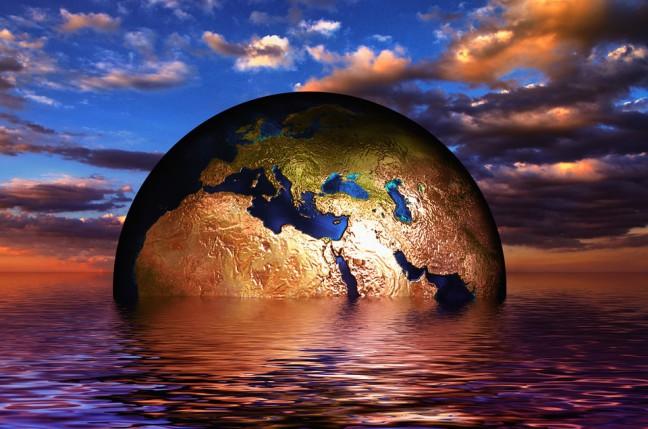A University of Wisconsin assistant professor co-authored a paper which projects the impact of four different CO2 emission scenarios by 2300.
Shaun Marcott, assistant professor in the Department of Geoscience at University of Wisconsin, is the co-author of a perspective paper published in Nature Climate Change on Feb. 8.
While the study used modeling to reconstruct past temperature histories and environmental conditions, much of the data presented in the study isn’t new, Marcott said. Rather, it consolidates information from prior studies to help connect the dots in climate change, he said.
The study is unique in the scope of its outlook as it models the impact each of the four scenarios would have on the climate for tens of thousands of years in the future, Marcott said.
“The reason that we put this paper together is because looking at it 10,000 years into the future really gives you the full picture,” Marcott said. “You really understand the impact we’re having on the system today.”
The study established 2300 as the ending point for emissions because that’s when carbon emissions are expected to top out, Marcott said. Even if the world brings emissions to net zero right now, there will still be carbon in the atmosphere, Marcott said.
This is worrisome, Marcott said, because the climate system has inertia, and once carbon heats up the atmosphere, there isn’t a quick fix for turning down the heat.
“You push something and it keeps rolling … because it hasn’t reached a state of equilibrium,” Marcott said.“What we’re doing now will have very long-reaching impacts that go out even hundreds of thousands of years.”
The study looked at how a two-degree Celsius rise in temperature impacted the rising sea level, Marcott said. The global temperature difference between now and the last ice age, in which much of North America was covered by an ice sheet, is four degrees Celsius, he said.
The models of the sea level in the study showed that just a few degrees increase in global temperature would, in the long run, flood Florida and put seaboard cities, such as New York City, Shanghai or Hong Kong, underwater, Marcott said.
And that’s just under the assumption that glaciers melt slowly, predictably, Marcott said.
“Every year we wait, we commit ourselves to more sea level,” he said.
Marcott, who specializes in the study of glaciers, uses paleontology and climatology to better understand how ice sheets evolved through time. Madison is a prime place to understand glaciers because we live among features shaped by glaciers, he said.
“The hills around town have all been sculpted by glaciers,” Marcott said, noting that even Bascom Hill is just a mound of sediment left by a glacier.
While Wisconsin’s geography is important to the study of glaciers, Marcott’s work includes a good dose of traveling. He and two graduate students spent six weeks in the remote, northernmost parts of Greenland to study the receding ice sheet last summer as part of the new paleoclimate and glacial geology program Marcott is creating at UW.
Marcott appreciates the study of geology because it allows him to combine his passion for the outdoors and his skills in science and math.
“The world ends up being your experiment,” Marcott said.














